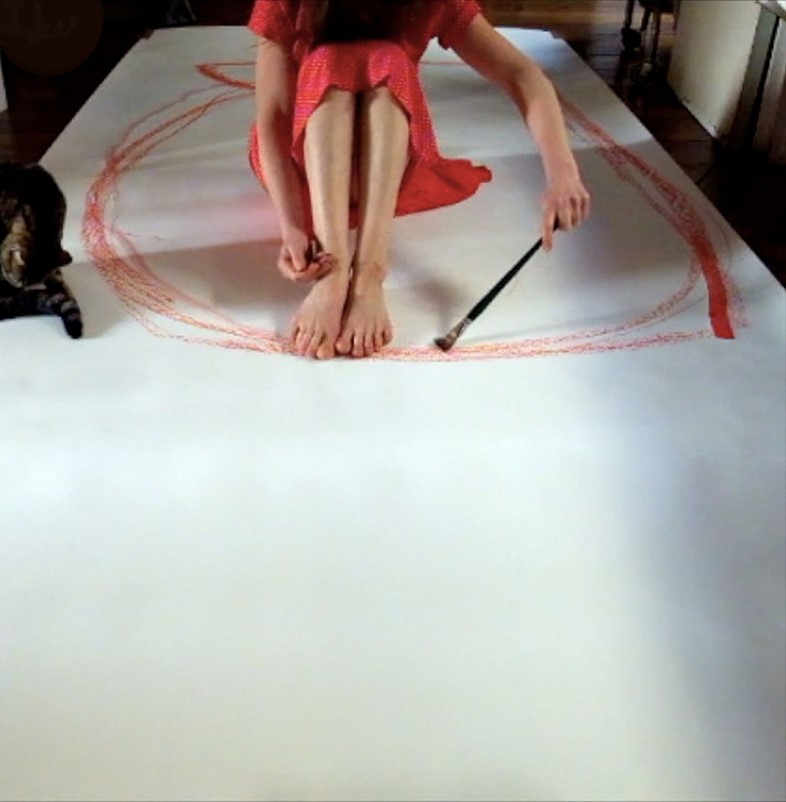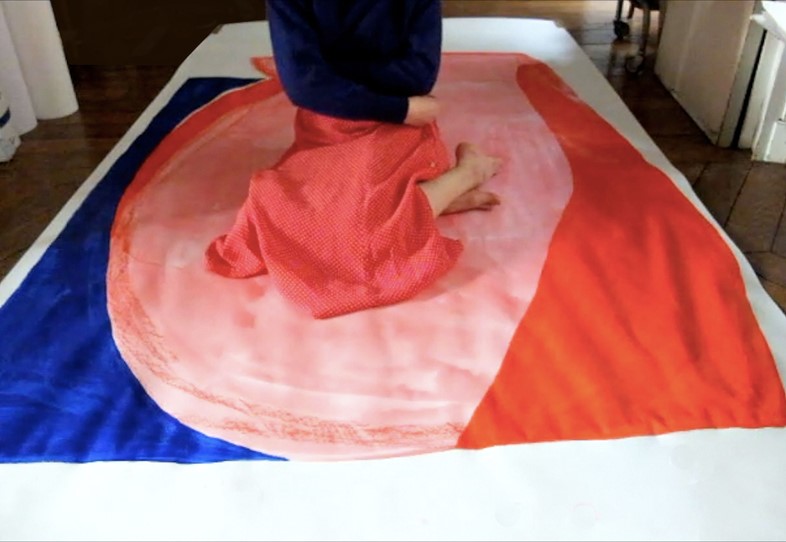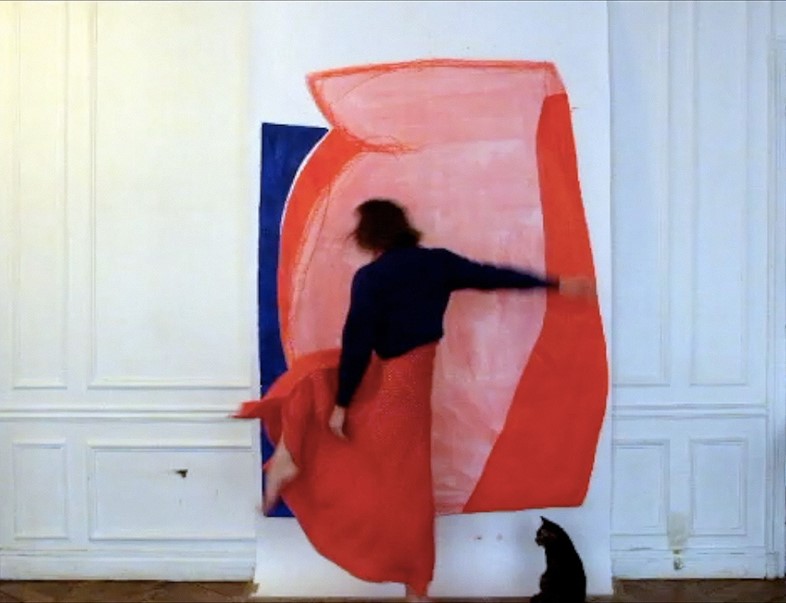The balletic Caroline Denervaud, presented by LA-based art collective Tappan, explores the physical liberation of movement and dance
Bound by a search for creativity and authenticity, AnOther has partnered with LA-based art collective Tappan, an initiative that was born out of a desire to reinvent the experience of buying art, to share stories about its artists.
Like many artists, Paris-based and Lausanne-born artist Caroline Denervaud explores the painterly representation of shape and form – though few can claim the truly tactile relationship that Denervaud explores within her work. Sheathing the floor of her studio with swathes of paper, and combining dance and movement with the application of pen or paint, Denervaud creates shapes that offer a direct trace of her movements. Such routines might see her lying across the canvas, flat or foetal, sweeping her charcoal covered feet from edge-to-edge or manifesting in hard lines the balletic swoop of an arm. Though these acts result in abstract-seeming images of stark block colour and line, the strokes of her brush couldn’t be less arbitrary – often directly following her silhouette or perhaps an erratic mood. Combine this exchange with layers of video or photographic recording of the process and the experiential relationship between Denervaud’s graceful movement, her carefully chosen coloured dresses and music, and the final painting is a meta millefeuille.

Denervaud has explored movement and its escapist qualities since she was a child. “There is first a need to speak, to let my body speak,” she tells AnOther. “Movement always was the easiest and most intrinsic form of expression for me. Yes, I was always dancing and painting as a child, but first of all I was a dreamer.” Although her greatest inspirations span modern dancer Pina Bausch, self-portrait photographer Francesca Woodman and abstract painter and sculptor Jean Arp, dancing came first. Denervaud asked photographer Pascaline Dargant – with whom she later formed the artistic partnership The Heidies – to capture her free-flowing movement in a series of stills, and thus opened the dialogue between the permanence of mark-making and the temporality of dance.

From this collaboration came Denervaud’s solo play with paper. “I work alone to be as close to the alive expression as possible,” she explains. “And the paper is a support that receives the marks of my movements. I work in a short time to keep the moment true. There’s no preparation, it is a ‘one shot’ kind of work. Either the marks on the paper can be left as they are after the performance, or I might decide to go further with it and use it as a base for a painting. The painted paper is often reused as a background to another video.” Being responsive and reactive is key to the artist’s endeavours: from the colour of a dress informing the mood of a palette, to relinquishing all expectations and restrictions: “I stop my brain and I go,” she explains. Denervaud’s works stand as the visual, two-dimensional realisation of an experience that was fleetingly fleshly and corporeal. The results are as sensual and inviting as they are graphic and stark.

For more information on Caroline Denervaud, and to buy her works, visit Tappan.